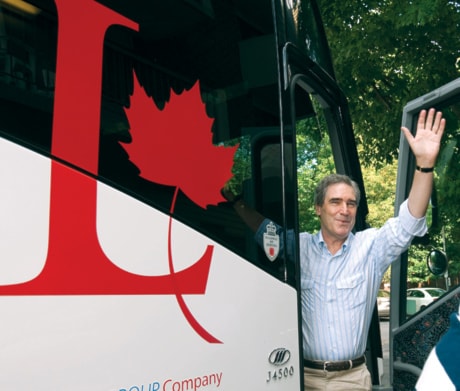OTTAWA — Michael Ignatieff’s summer-long, cross-country bus tour has given a modest boost to Liberal fortunes but done little to improve the leader’s popularity, a new poll suggests.
The Canadian Press Harris-Decima survey indicates the Liberals have climbed to 30 per cent support, only three percentage points behind the governing Conservatives.
Heading into the summer, the Liberals were as much as 10 points behind the Tories.
However, 54 per cent of respondents still registered an unfavourable view of Ignatieff, compared to only 29 per cent who had a positive view of the leader.
That leaves him with a net score of minus 25, only one point better than he scored last May. He is by far the least-popular federal leader.
Harris-Decima chairman Allan Gregg said the poll suggests Ignatieff’s non-stop tour of the barbeque circuit has done little to dispel the Tory-promulgated image of the Liberal leader as “an out-of-touch, effete, central Canadian snob.”
By contrast, Prime Minister Stephen Harper was viewed unfavourably by 49 per cent, favourably by 44 per cent, for a net score of minus five.
The poll found Ignatieff earned a net negative score in every region of the country, among men and women, all age groups and all education levels. He scored worse than Harper among all demographic groups, except Quebecers and those with post-graduate degrees.
Only self-identified Liberal supporters gave Ignatieff an overall positive rating and even that was tepid — 54 per cent favourable versus 32 per cent unfavourable.
Harper, by contrast was viewed favourably by a whopping 88 per cent of Conservatives. He also scored overall positive ratings among Prairie respondents and those with college educations.
Harris-Decima chairman Allan Gregg said the results suggest Ignatieff has failed to cultivate a base of loyal supporters who view him as their champion.
“He simply does not have a base out there, whereas Harper does,” Gregg said in an interview.
“As a consequence . . . the Conservative vote is far more resilient when it gets pushed down and, on the other side, there’s no lift for the Liberal vote that might be provided by leadership.”
Gregg said parading Ignatieff around the country in a plaid shirt and ball cap could help dispel his image as an aloof elitist. But he said the poll suggests Ignatieff needs to define more sharply what he stands for if he’s to make any real headway.
“It’s too late to be all things to all people. He has got to be something to someone. He’s got to pick a base. He’s got to say, ’I’m for you guys’.”
While there’s little good news for Liberals in the leadership numbers, the party itself has rebounded from its spring nadir, when support slid as low as 26 per cent.
Nationally, the Tories were at 33 per cent, to the Liberals’ 30, the NDP’s 16 and the Greens’ 10.
In Quebec, the Bloc stood at 37 per cent with the Liberals in a solid second at 28 per cent. The Tories were at 15 per cent, the Greens at 10 and the NDP at nine.
In Ontario, the Liberals and Conservatives were statistically tied, with 36 and 35 per cent respectively. The NDP were at 18 and the Greens 10.
The Liberals were well ahead in Atlantic Canada, with 45 per cent to the Tories’ 28, the NDP’s 18 and the Greens’ nine.
In British Columbia, the Tories led with 32 per cent, to the NDP’s 30, the Liberals’ 21 and the Greens’ 15.
The Tories continued to dominate in Alberta, with 63 per cent to the Liberals’ 18, the NDP’s six and the Greens’ 11.
They also led in Manitoba-Saskatchewan, with 44 per cent to the Liberals’ 27, the NDP’s 21 and the Greens’ seven.
The leadership data was gathered Aug. 19-22 through a telephone poll of 1,007 Canadians and is considered accurate within 3.1 percentage points 19 times in 20.
Party support data was gathered through a survey of 2,017 Canadians Aug. 12-22 and is considered accurate within 2.2 percentage points 19 times in 20.
The margins of error are larger for sub-samples.
